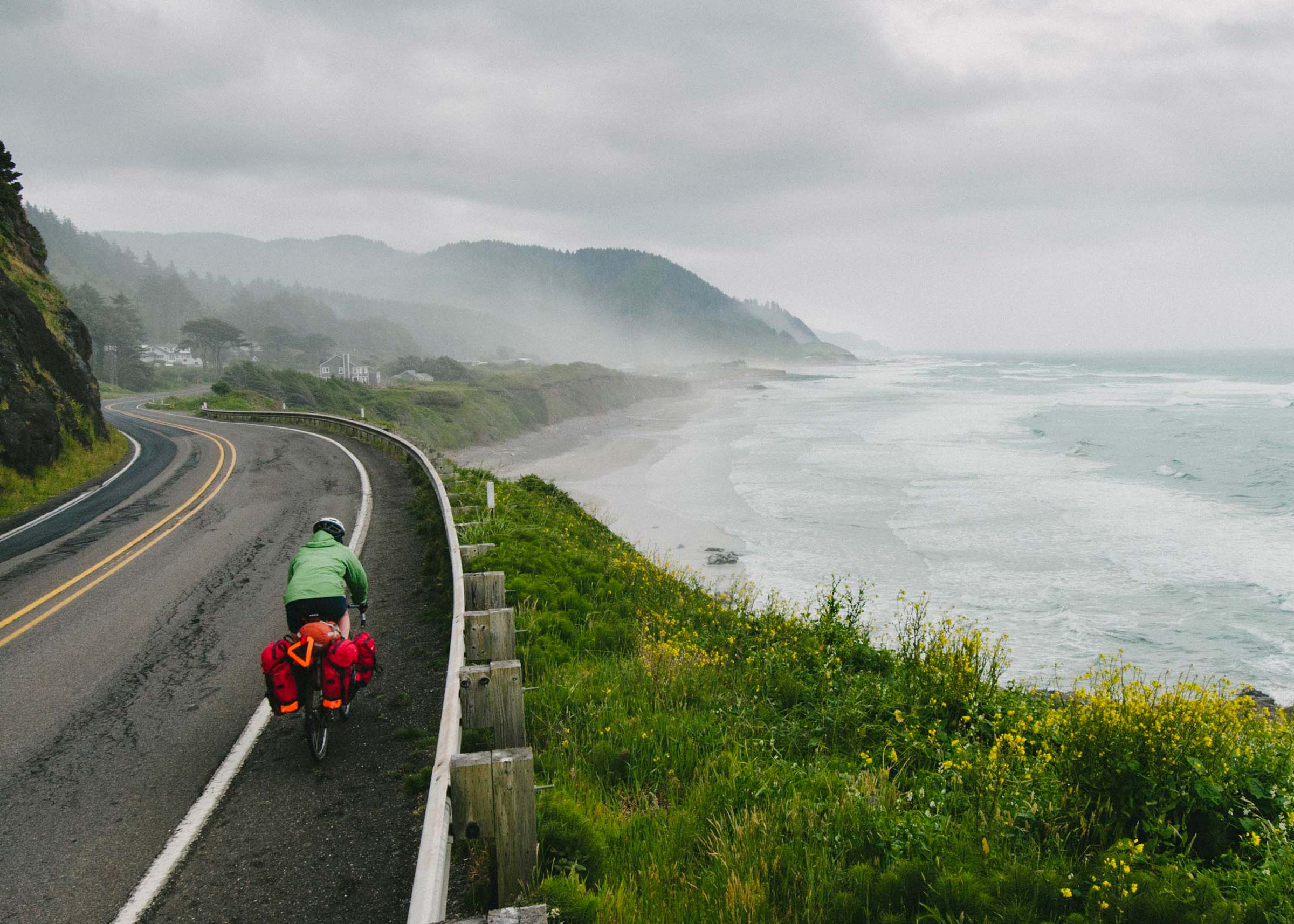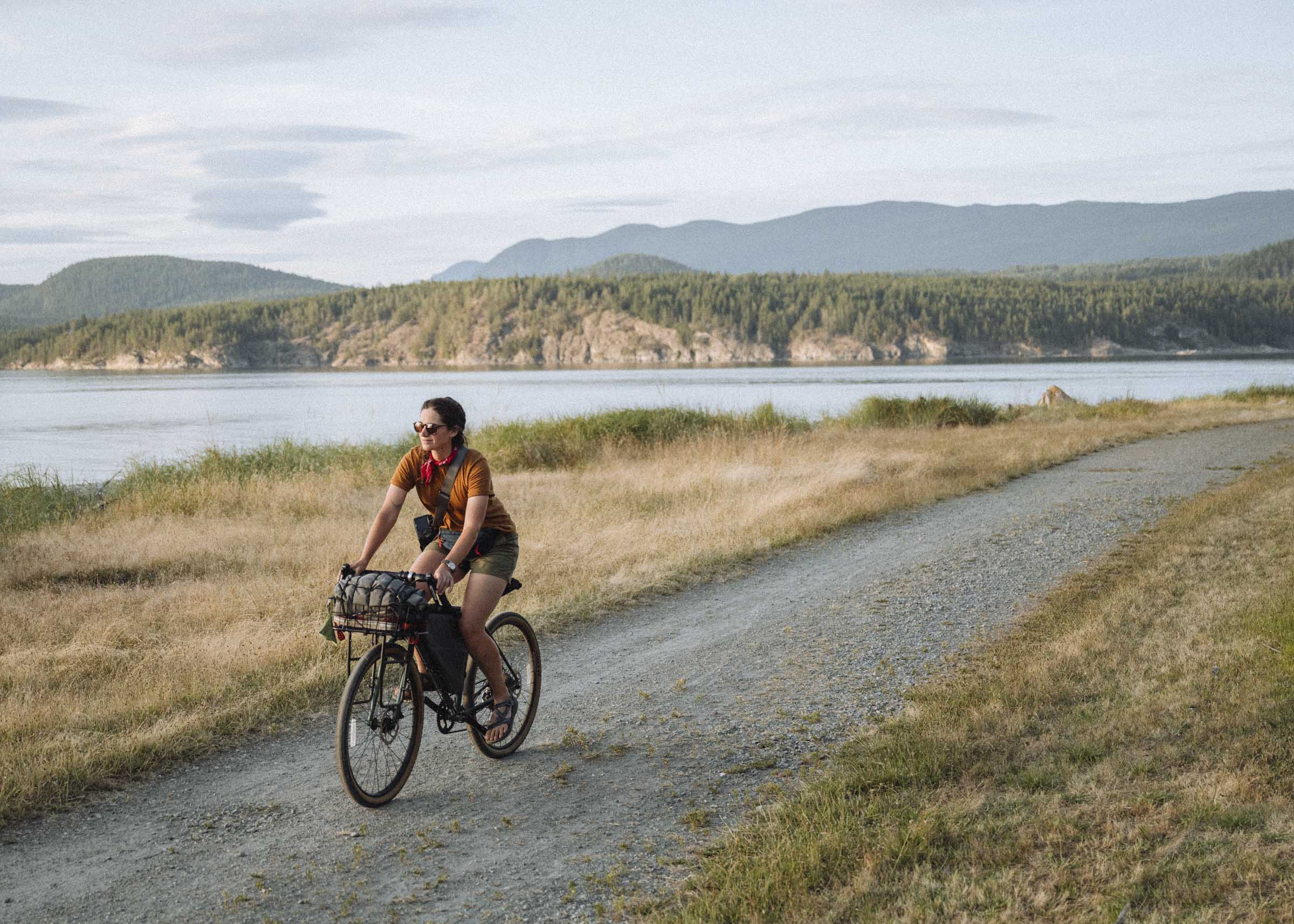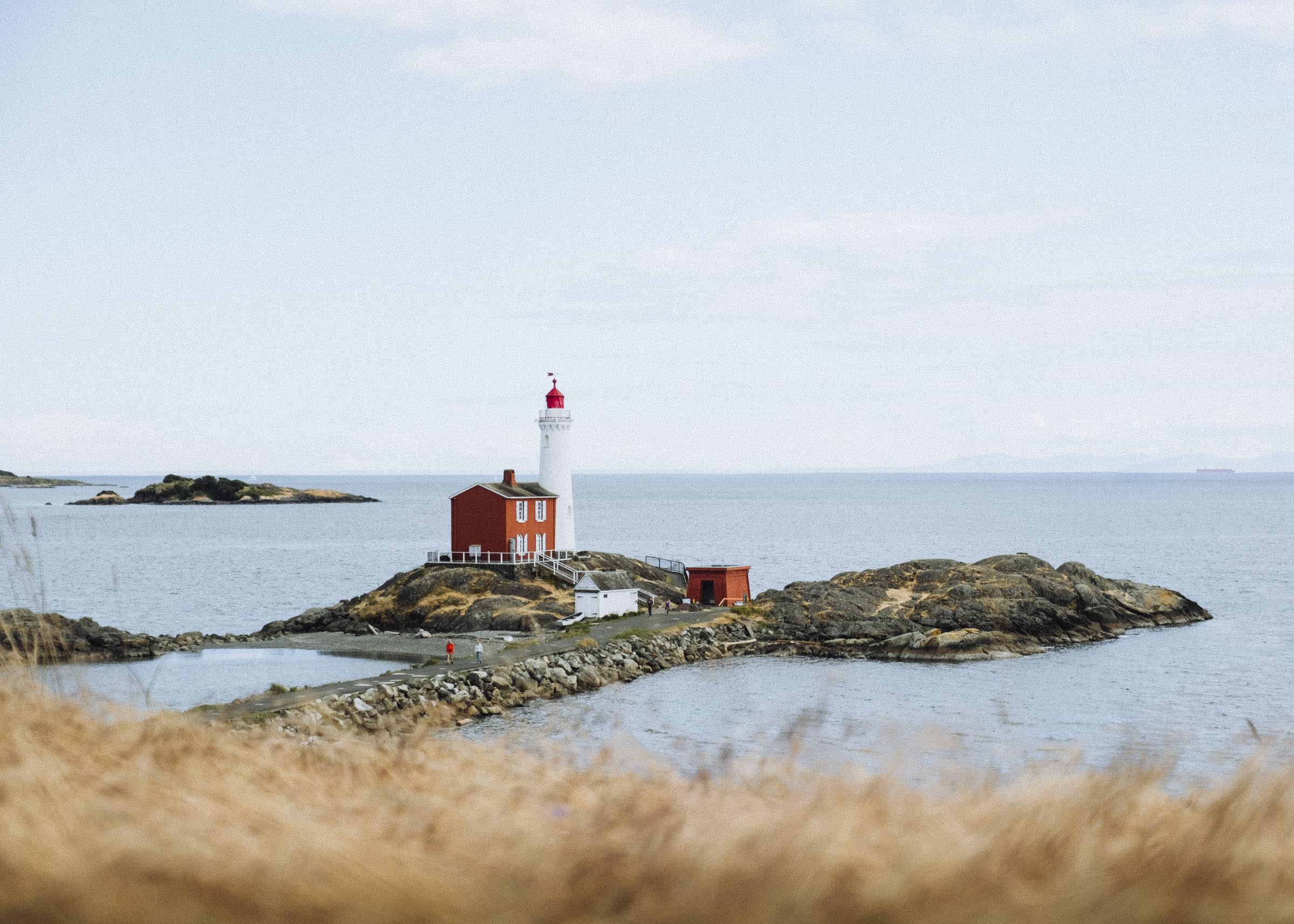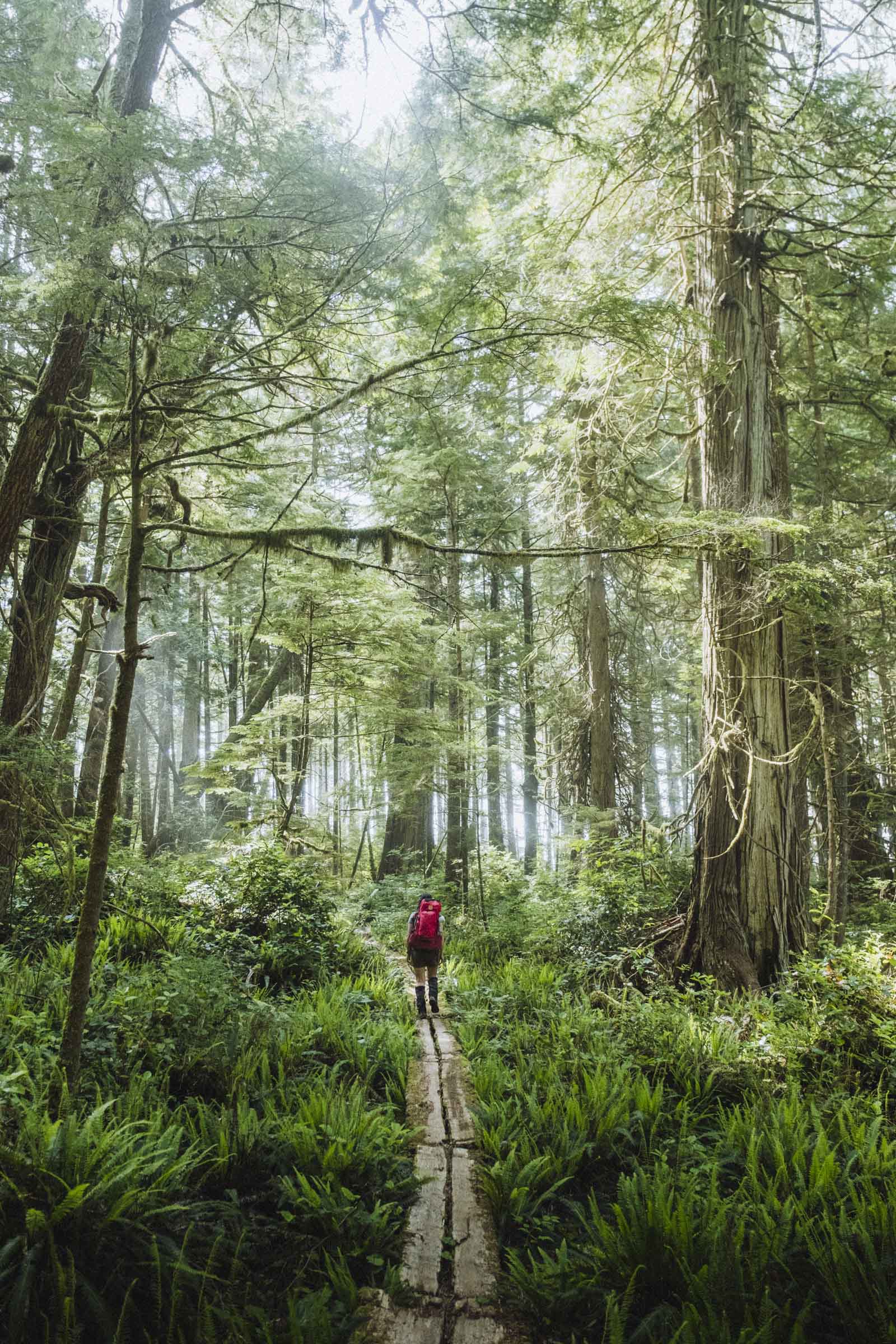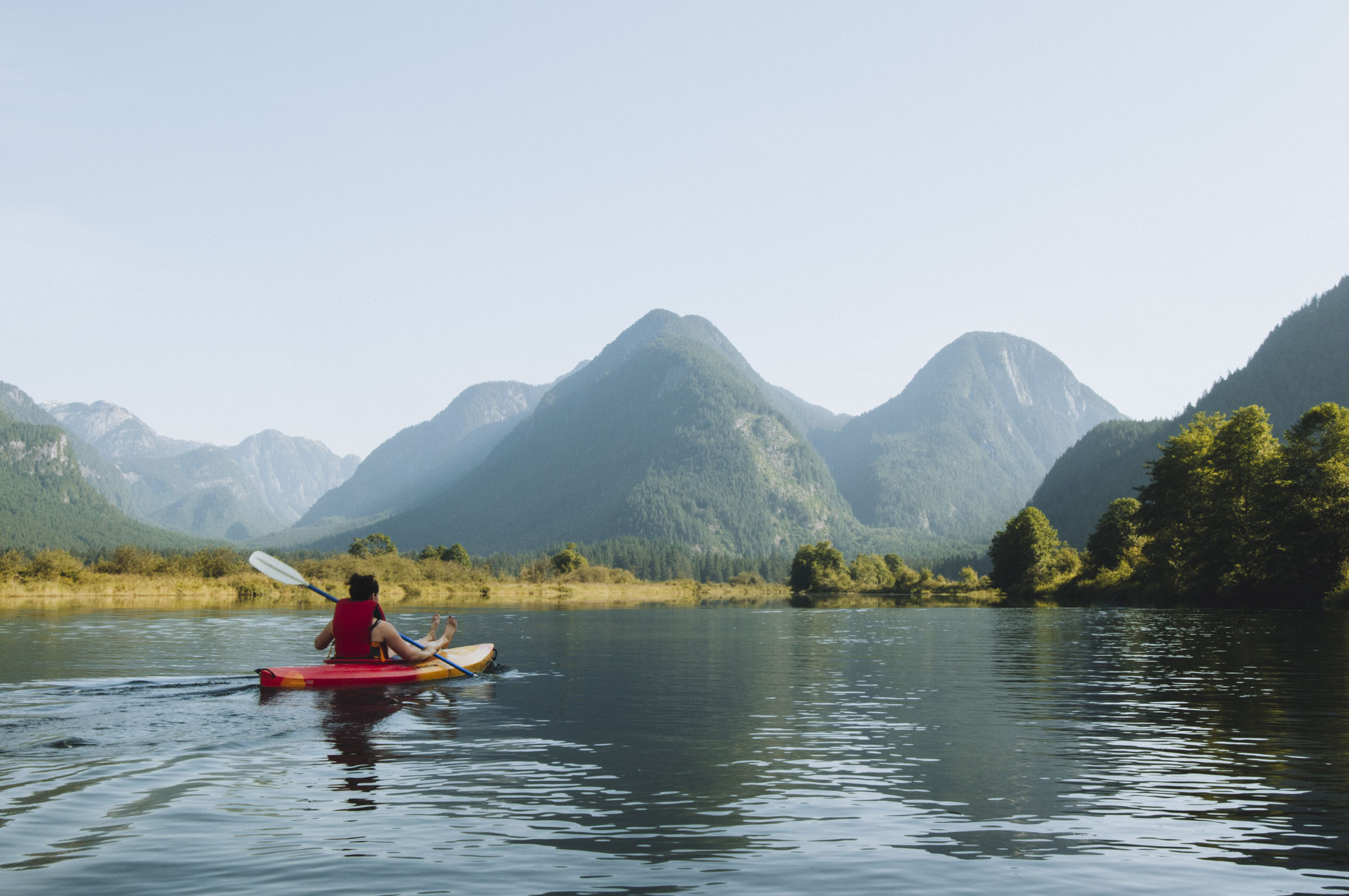Juan de Fuca Bike de Loopa
Bicycling along the Olympic Peninsula and the San Juan Islands
Washington has a startling allure. Its rough rocky coastline, wet mossy mountains, fern-filled forests, arid interior, and fresh pacific air make it not unlike our hometown province of BC, yet there are times when its pull can be felt over and above anything closer to home. It isn't just the cheap beer, either. It’s kind of a weird mystery — a mystery best enjoyed slowly, thoroughly. By bicycle. And a pannier full of beer. Twin Peaks theme song
We've biked the Peninsula and Puget Sound region a couple of times, on each occasion taking slightly different routes, new roads, and returning to favourite destinations. There is a lot to explore down there, and a lot to see. Host to a number of campgrounds with sites reserved for bicyclists, you can design just about any itinerary and have a pleasant go of it without planning in advance or reserving campsites. Just remember to pack your rain jacket.


To bicycle the Pacific Northwest's islands and peninsulas is to keep one eye on the ferry schedule, and especially so in the shoulder seasons when sailings are less frequent. Sometimes there's only one or two sailings a day, and if you aren't on it you're either waiting or rerouting.
But it's worth it. Ferries are fun. Sitting on the deck of a big old boat watching islands drift by is one of life's more singular pleasures. It's a perfect time to fix some flat tires, grab a bite to eat, and reflect on why you're out there.




The first leg of the trip was to catch a ferry to Vancouver Island, hop onto the Lochside Trail, and bike down to the Port Angeles ferry. The Lochside is a first class bicycling path, it's pleasures barely abated even in the rain when you're 4 hours behind schedule and plagued by flat tires. Needing a safe spot to camp out for the night we stopped in at an old RV park, but maaannnnn was it ever creepy in the wet twilight, with an indistinct air of down-and-out neglect. The map said there was a legit campground maybe 10km further so we continued on, up a ridge and back down to the coast, only to discover that (of course) it was still closed for the season (but so much the better — as long as we weren't kicked out). The long pebbly sweep of beach was empty, driftwood glistening in the damp blue evening. We waited for dark then set up.
Morning broke and the skies cleared and we were back on our way, headed to Victoria for a quick coffee at Habit and the next ferry.




The Port Angeles ferry has always been a favourite. You're in the wide and windy straits, the white-capped Olympic Mountains rising slowly from the sea mist. But the inviting open waters can sometimes prove treacherous: big Pacific rollers squeeze in to the narrow Juan de Fuca Strait and our boat was pitching and rolling under a heavy wind. We could barely stand without being bowled over, which was great fun until the seasickness galloped in. Before we knew it everyone on board was either sprawled on the floor, curled over with their heads between their knees, or chucking up their toads and donuts in the bathroom. It was a terrible and enlightening experience. Landlubbers all.
With a great gasp of relief we finally docked and proceeded through customs and stumbled out onto the substantial solid physicality of the U-S-of-A.

There is a bike path out of Port Angeles but when we asked for directions we were told it wasn't worth our effort, so after lunch we rode out on the 101 east towards Port Townsend. This stretch of highway is full of fast and heavy traffic and accidents are not uncommon. The Peninsula is a vast and beautiful place but the stretch of highway might as well be anywhere. I've since found and biked the path and believe me — it isn't hard to find at all and indeed well worth the effort. Like the Lochside Trail on Vancouver Island it follows an old rail bed and is, for the most part, flat and quiet. It's a hundred thousand million times better than the highway. Just take the first left off the ferry and ride along the coast and you'll be funnelled right onto it. Seriously. But first check out the town. Always always.



We weren't sure how far we'd make it that second night. Our original plan was to bike from Vancouver to Sequim all in the first day, so stopping there on the second night didn't quite feel adequate. We pushed on. I was kinda excited to maybe wild camp in a field or forest somewhere but we decided to try make it to Fort Townsend State Park. The road was hilly and knees were creaking and spirits waning when we came up to a little drive-through coffee shack. It had been a few years since Meg's last coffee, so when she pulled up and ordered a double caramel macchiato with whipped cream the rest of the day fell into place.
The sun was dropping low into a hazy gold when we turned off the 101 onto Hwy 20 and a big ol' hill with no shoulders. It seemed a near impossible climb but you just hunker down and slowly push the miles behind you one painful pedal stroke at a time and before you know it you've crested and start descending and the air is fresh and fragrant and you've never felt so alive and oh my goodness is this the coffee speaking or are you having the greatest best time ever in life?



When we finally arrived at Old Fort Townsend we found that it, too, was still closed for the season. By now tired and beleaguered, we pushed our bikes through the gate, past the glowing windows of the resident's cabin, and down towards a picnic table to prepare dinner and decide what to do. Too exhausted to go on, we didn't want to be turned out and forced to bike any further that night. We ate some noodles and started surveying the park for a quiet corner to set up. We had wandered some ways when we heard the ranger's truck door slam and a bright beam of headlights breached the hill and illuminated the forest. Fearful the telltale reflective patches on our bikes and bags we ran like lightning back to our stuff, threw it in the bushes, and quickly jumped behind a tree just as the truck came up to our site making the night's last round. Phew! A little shaken and just a tiny little bit overdramatic, we hauled our gear down to a grassy knoll right above the beach and made camp. It was wild and windy and waves were crashing hungrily against the rocks. We passed the night with dreams of giant swells.







Whistling inconspicuously the next morning, we nonchalantly packed up and pushed our bikes back up the hill. On the way out we found first an old WWII torpedo disassembly shed and then a quiet little seaside trail that brought us past a belching pulp mill and all the way to our favourite quiet little seaside town: Port Townsend.
There's never enough time in Port Townsend. Originally speculated to become the largest port on the west coast, the city had an influx of capital and grew rapidly in the 1870s–80s. By the 1890s, when the depression hit and the railroads had run out money and stopped short at Seattle and Tacoma, the dream was over. Investors and industry left rapidly. But thanks in part to the speed of economic decline, Port Townsend's buildings were left largely preserved, and by the late 1970s the city was listed both on the National Register of Historic Places and designated as a National Historic Landmark. The town has since revitalized.
Stately old brick buildings with faded hand-painted signs, ornate Victorian timber houses, and a thriving independent wooden boat-building industry make for good exploring. It feels good wandering around and resting up in quiet old towns. PT is a little touristy, sure, but it's popular for a good reason. It feels a bit out of the way, and we were still squarely in the shoulder season so we had a little piece of it all to ourselves. At least for a little while — we had a boat to catch.



We caught the ferry over to Fort Casey on Whidbey Island, another abandoned army base turned park. There are bunkers and gun turrets and tunnels and towers and crumbling concrete and wet bulging benign calcium deposits and it is hard imagining living there but all very fascinating to poke about.
The riding on Whidbey is pretty idyllic. While the next hill is never far out of mind, there are large stretches of flat pastoral landscapes, big beautiful farms and fields, and quiet roads. We cut into a small town, stocked up on pasta and pesto, and headed up island to Deception Pass.



We had biked through Deception Pass before in 2010 on our way down to Mexico, but other than a few minutes on the bridge we had mostly zoomed through. This time we were staying the night and were pleasantly surprised at everything we had missed the first time. Deception Pass is easily one of my favourite campsites on the coast. Hiker biker sites are normally ad hoc and forgettable (or worse) but these were exceedingly plush and private, tucked into the lush pacific forest. There were beaches and cliffs and trails to explore. It is stunningly beautiful. The bridge isn't even half of it. Small wonder it's the most-visited of all of Washington's State Parks.






It was after Deception Pass that we decided to change plans. The whole trip was originally intended as a long-winded route to a Damien Jurado concert in Bellingham, but Megan's feet were hurting and my legs were just about out of steam so we decided to cut it short and head to Anacortes to catch the ferry back to Vancouver Island. We had no internet service and no way of knowing what time the sailing was but with the freed-up day we figured it would be ok, and it was. We had to wait a day for the next boat but we had food and there was a great campground nearby. We napped on the rocky beach and explored the coves and trails and enjoyed the sunset. In some ways it felt like our first relaxing downtime of the entire trip, the first time we had camp and dinner set up and finished before sunset. It was the perfect way to end the week. Soon we'd be back in the saddle, back on the ferries and highways, back climbing hills and obsessing over possible snacks, but for now all that could wait. The rest of the day stretched out before us.



